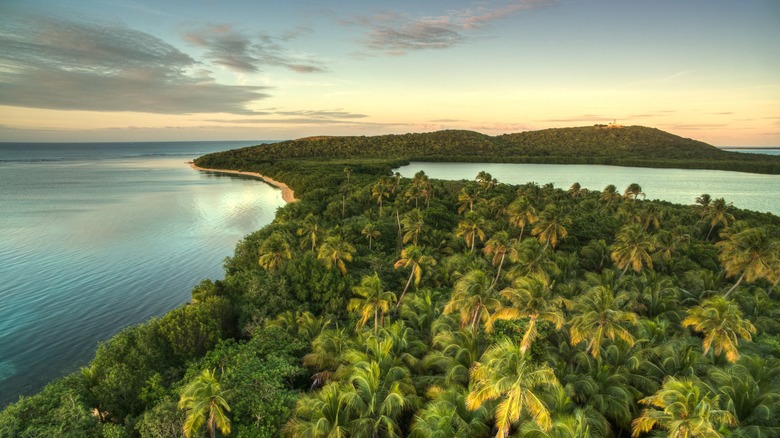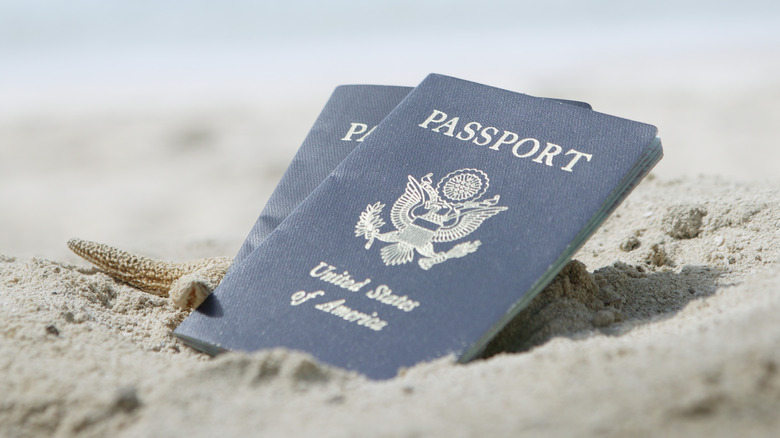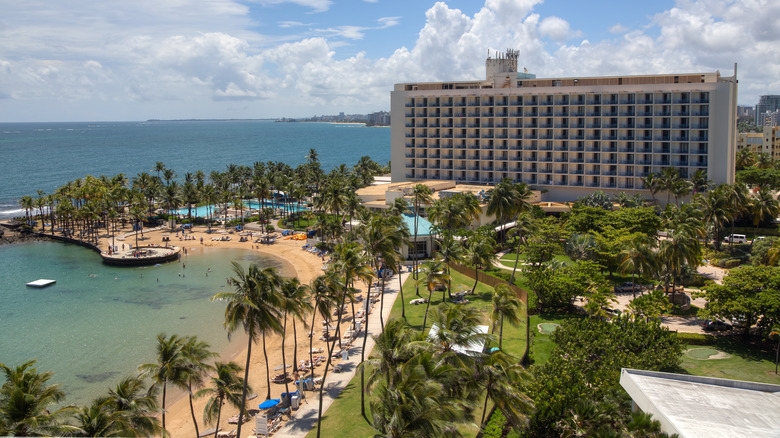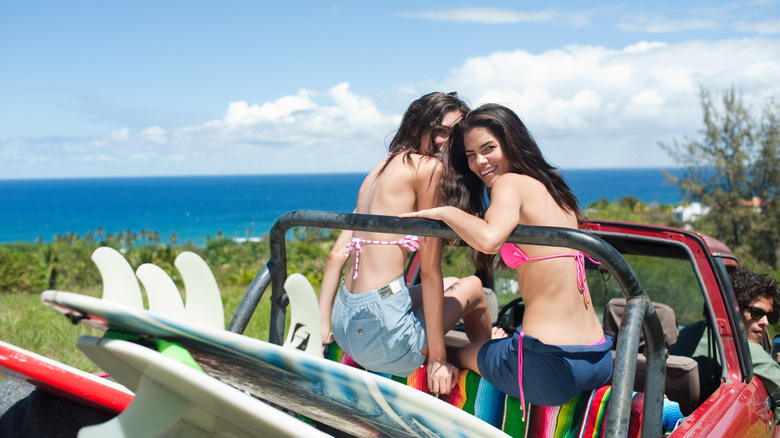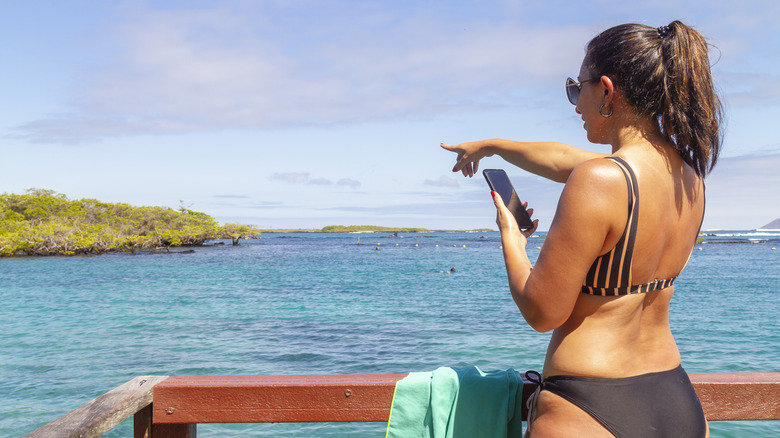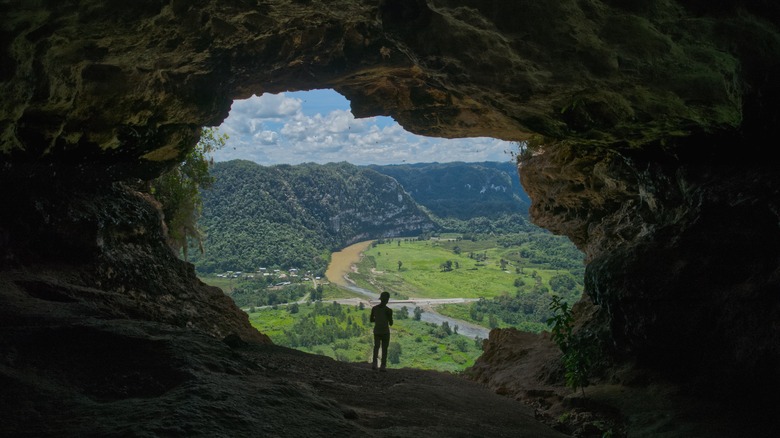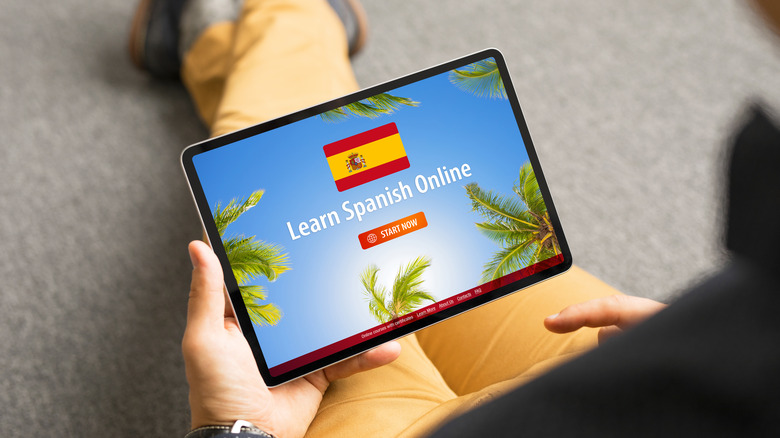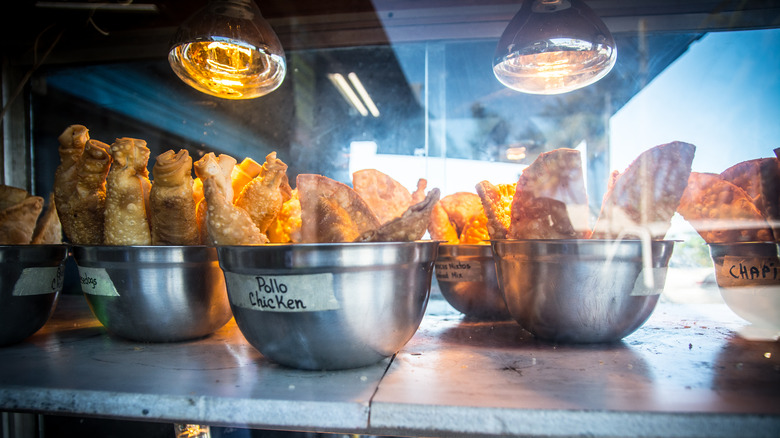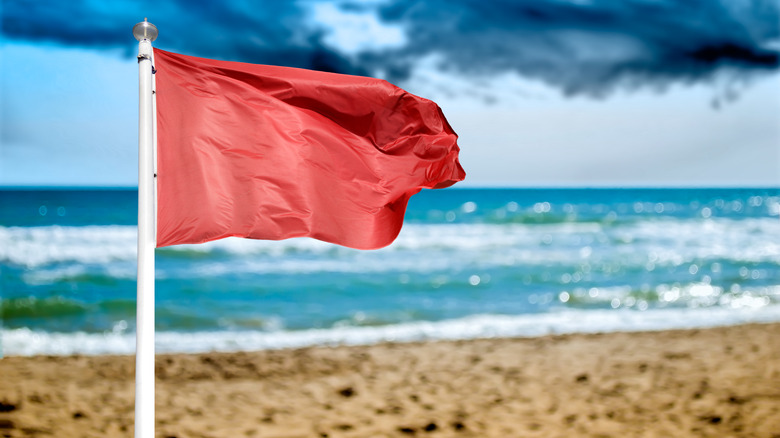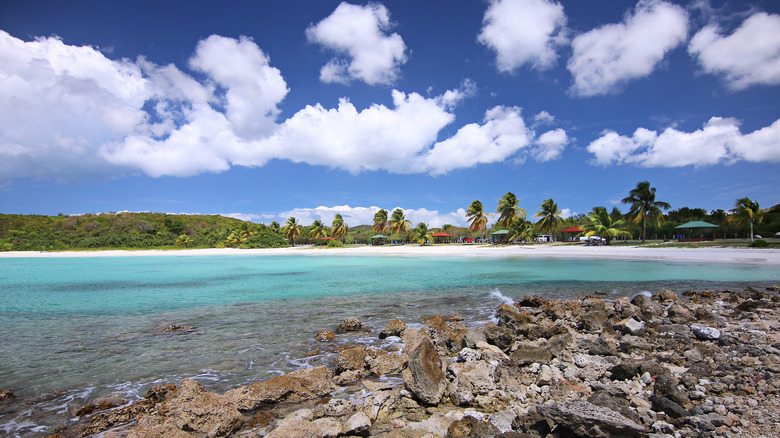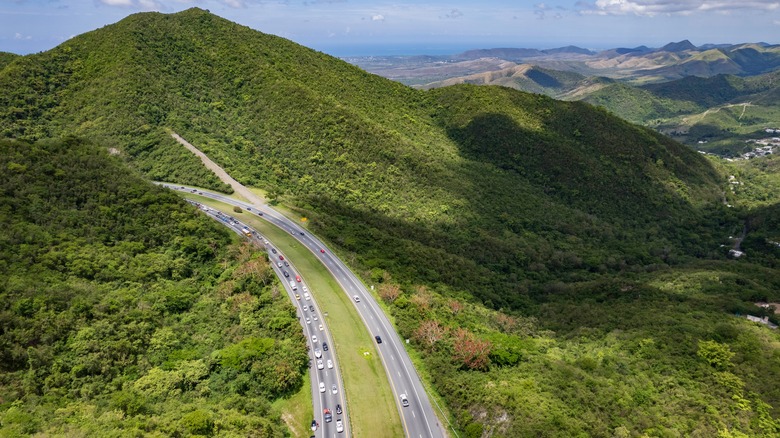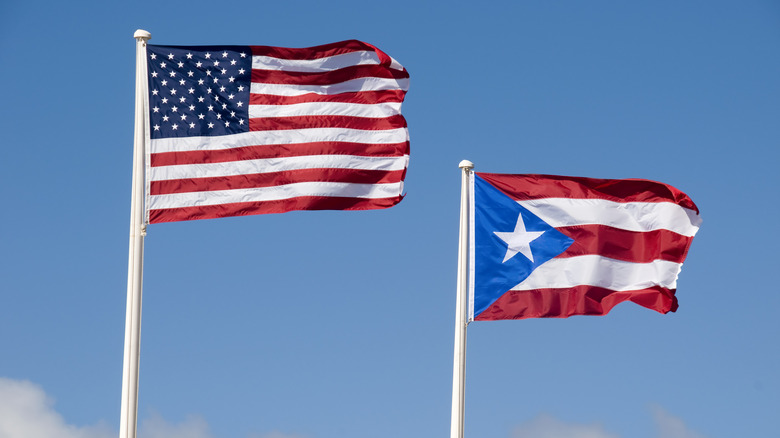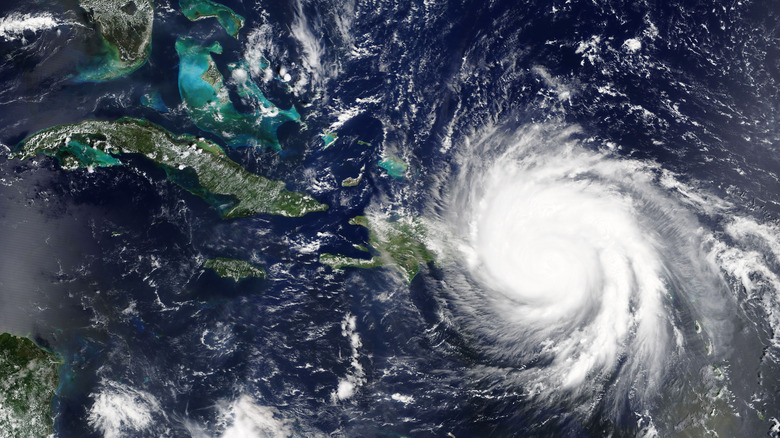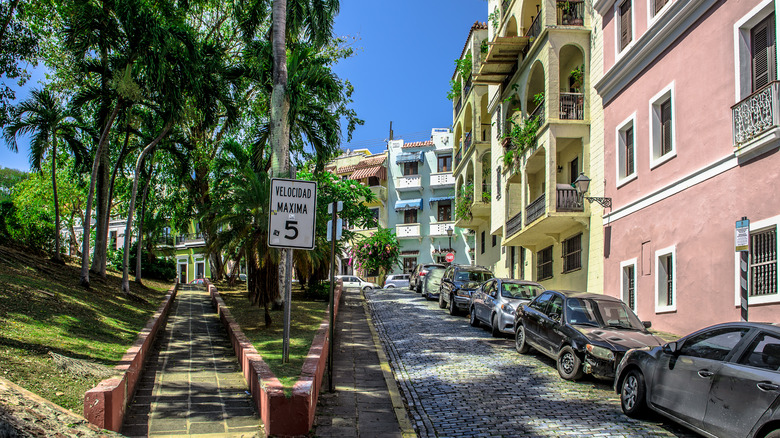15 Essential Travel Hacks When Visiting Puerto Rico
Rich in history and awash in tropical landscapes, it's easy to see why Puerto Rico is such a popular travel destination. There's so much to experience on this compelling Caribbean island, from sugary white sand beaches to ancient Taino sites, fantastic festivals, and a smorgasbord of delicious eats. If you're planning a trip to Puerto Rico, it helps to come armed with a bit of knowledge so that you can make the most of your time on this incredible island.
While Puerto Rico has been a territory of the United States since the late 19th century, it's actually quite different from the mainland. From the tropical landscapes to the Spanish language and the traditional foods that blend Taino, African, and European influences, the island has its own unique identity and customs. There's so much to discover, but also a lot to be aware of. Don't worry, though, because we've compiled some essential travel hacks that can help you navigate the island with ease. Follow these tips on transportation, accommodation, packing, and more to set yourself up for an unforgettable holiday on "The Island of Enchantment."
Check the entry requirements
People often ask whether a trip to Puerto Rico requires a passport. If you're American, the answer is no. Puerto Rico is a U.S. territory, so Americans don't need a passport to enter. However, you will need some form of government-issued photo ID to fly there. According to the Transportation Security Administration (TSA), this could include a state-issued driver's license, permanent resident card, or a federally recognized Tribal Nation card. Keep in mind that as of May 2025, your identification must be REAL ID compliant to fly within the states and to its territories. If your ID has a star in the top right corner, it is already REAL ID compliant. If not, you will need to upgrade your identification.
All other nationalities will need a passport and possibly even a visa to enter Puerto Rico. The island has the same entry requirements as the mainland U.S.A., so it's important to check what documents you will need before you travel. If you need a visa to enter the United States, you will also need one to enter Puerto Rico. In addition, anyone planning to drive in Puerto Rico will need an official driver's license. If you're American, you can use your U.S. driver's license. People from other countries will need a valid driver's license and an International Driving Permit.
Forget about all-inclusives
The Caribbean is known for having some incredible all-inclusive resorts. But, if you're looking for a package deal to Puerto Rico that includes your accommodation, meals, drinks, and activities all for one set price, you won't find it. According to Vanessa Ramos on Travel Lemming, "Puerto Rico doesn't have all-inclusive resorts mostly because of the island's safety and the high production costs of all-inclusive resorts." She explains that Puerto Rico is generally safe enough that tourists don't need to be cloistered in an all-inclusive resort. In addition, the costs of running an all-inclusive resort are higher than in other places in the Caribbean, so it doesn't make economic sense for hotels or guests.
That's not to say that Puerto Rico doesn't have some incredible resorts with great food and drinks on offer. It just means that your resort stay might cost more than expected in bar and restaurant bills. If budget is an issue, you may want to steer clear of the high-end resorts altogether and book into a parador (a small, family-run hotel or guesthouse) or an Airbnb. Some vacation rentals have kitchens, so you can save money by picking up food at markets or grocery stores and cooking your own meals.
Rent a car to explore the island
With so much to see and do in Puerto Rico, you'll definitely want to get out and see some of the sights. The best way to do that is by renting a car. Take it from a local. Angel Acevedo López says on Quora, "Public transportation is scarce and mostly unreliable. Taxis are too expensive here and there are many places that are worth visiting outside the metropolitan area." If you're not afraid of a few potholes and traffic jams, there are plenty of places where you can rent a car in Puerto Rico.
Many well-known car rental companies operate in Puerto Rico, including Hertz, Thrifty, and National. The requirements for renting a car are similar to those in the United States. You need to be 25 years or older and have a valid driver's license. In most cases, you'll also need a credit card. The rental price will typically include mandatory compulsory liability insurance that protects you from liability in the case of an accident.
Download Citywiz to find restaurants, hotels, and attractions
Whether you're a first-time visitor to Puerto Rico or a veteran traveler to the island, it can be difficult to know what spots to hit up for the best food, shopping, and entertainment. Citywiz is a free travel app created specifically for Puerto Rico. You can use it to search for places to eat, hotels, fun events, or cool attractions to visit across the island. The interactive map will show you what spots are nearby, or you can search for specific places to get directions and read reviews from other travelers. You can also save your favorite spots for future reference.
Travel apps are a blessing when you're in a new place where things might not be so familiar. Besides Citywiz, some of the best travel apps to download for your Puerto Rico trip could include Google Translate or DeepL for fast and accurate translations. Google Maps and Waze both work in Puerto Rico and can help you with navigation for everything from walking tours to road trips. Uber is also available in Puerto Rico.
Time your excursions to avoid crowds
Puerto Rico's beaches, lakes, and mountains are popular with tourists and locals alike, so they can be very busy on weekends and holidays. To avoid crowds, consider visiting well-known spots on a weekday. If you can't avoid visiting on a weekend, try to leave early to beat the traffic and other day trippers. If you're heading out from San Juan, keep in mind that rush hour traffic typically takes place from 8 a.m. to 10 a.m. and from 4 p.m. to 6 p.m.
Another thing to consider if you don't like crowds is the time of year you travel. Puerto Rico's peak tourist season runs from December to April. During this time, visitors flock to the island to escape colder climes. July and August can also be busy at beaches and top attractions, as many locals and people on the mainland and further abroad have summer holidays during these months. You may find that if you visit in the shoulder seasons between May and June or September to November, prices are lower, and there are fewer crowds.
Brush up on your Spanish
Puerto Rico may be a U.S. territory, but the dominant language is Spanish. In 1902, Spanish and English were declared the official languages of Puerto Rico. However, Spanish remains the main language used in schools, business, and government. While many people can speak English, there is a large percentage that does not. The farther you get from San Juan and tourist areas, the more likely you are to run into people who don't speak any English at all.
Knowing even just a few words of Spanish can go a long way on the island, and it's a great way to be a considerate tourist when visiting Puerto Rico. The locals will likely appreciate your efforts even if you mispronounce a few words. Language apps like Duolingo and Babbel can help you nail down some basics. And if you want to take your Spanish to the next level, there are several Spanish language courses you can take in San Juan. ISLA offers Spanish immersion courses that run from Monday to Friday mornings from 9 a.m. to 12 p.m. The school can also arrange homestays for a fully immersive experience.
Eat for cheap at street food stalls and panaderías
One of the reasons Puerto Rico is considered one of the most budget-friendly beach destinations in the Caribbean is there are so many cheap eats on offer. If you want to save money on food, head to the spots where locals go. Street food stalls are a great way to sample the diverse flavors of Puerto Rico without breaking the bank. You can find food kiosks on busy city streets, in front of the entrances to popular attractions, and in food truck parks. Popular street eats include alcapurrias (deep-fried fritters filled with meat), lechón (slow-roasted pork), and tripletas (sandwiches filled with steak, ham, and roasted pork).
Panaderías provide additional options for delicious, wallet-friendly food. Pop in one of these bakeries to grab some freshly baked bread for your road trip or sample tasty treats like quesitos (pastries filled with cream cheese), mallorcas (sweet bread rolls), or brazo gitano (a rolled cake filled with guava). Many panaderías also sell breakfast and lunch dishes like scrambled eggs, sandwiches, and soups.
Take note of the warning flags on the beach
Puerto Rico's beaches are some of the biggest draws for travelers. However, it's important to be aware that some of the beaches can be dangerous. For example, you might want to think twice before swimming on popular Condado Beach. The waves can be very strong, and rip currents have pulled more than a few people out to sea. Playa Jobos is another beach notorious for having strong currents and riptides.
No matter what beach you're on, it's important to check the flags to see what the conditions are like before you jump in the water. Yellow flags mean there are moderate currents and surf. Red flags indicate dangerous conditions like rip tides or rough surf, so you probably don't want to enter the water even if you're a good swimmer. Double red flags mean the water conditions are extremely dangerous and off-limits to the public. If you don't see any flags on the beach and you're not sure what the conditions are like, it's best to stay out of the water altogether.
Get off the beaten path
While Puerto Rico's most popular attractions are definitely worth checking out, some lesser-known spots can offer experiences that are just as rewarding, if not more so. For example, if the thought of battling the crowds on Condado Beach or Isla Verde Beach doesn't appeal to you, consider making a trip to Playa Caracas. This under-the-radar Caribbean beach is located on the south coast of Vieques Island, and it features incredibly clear waters and a wide strip of white sand that is rarely crowded.
If you want to explore pristine nature without vying for space with the masses, head to Toro Negro State Forest. This natural reserve is home to the highest mountain in Puerto Rico and the second-largest forest. There is a camping site in the park where you can pitch a tent amid lush greenery, although you'll need a permit to camp in the park. The permit costs $30 for up to six people, and it can be reserved through Amigos del Bosque Toro Negro. There are also numerous hiking trails in the park, some of which lead to natural pools perfect for swimming.
Don't underestimate the size of the island
Puerto Rico may seem small on the map, but it's bigger than it looks. It spans roughly 5,500 square miles and includes the islands of Vieques and Culebra off the east coast and Mona Island off the west coast. Depending on where you want to go, driving to your final destination could take a few hours, especially if traffic is heavy. Plus, you'll probably want to factor in some extra time for stops along the way at roadside food stalls, interesting towns, or gorgeous viewpoints.
Locals suggest not trying to cram too many things into your itinerary. If you only have a few days on the island, you might want to consider staying in the capital and exploring the historic sites in Old San Juan and beaches close to town, like Escambrón Beach or Ocean Park Beach. You could take a day to hike in El Yunque National Forest or sample local dishes in Piñones. If you have more time, you can head further abroad to the popular surf town of Rincón or the spectacular beaches of Culebra.
Tread lightly when talking about politics
Politics can be a touchy subject in Puerto Rico. The territorial status of the island is a topic that many people feel strongly about one way or the other, and debates over it can get quite intense. Some people believe Puerto Rico should be an independent country, while others feel it should be a U.S. state with all the rights that come with that. Others are fine with the island being a U.S. territory. It's a complicated topic and one that might make people uneasy.
It's best not to bring up issues of statehood or independence. If it does come up in conversation, try to be respectful of other people's opinions and mindful of the fact that it might be a sensitive topic for some. In addition, keep in mind that while Puerto Ricans are American citizens, most identify as Puerto Ricans first. Most Puerto Ricans are incredibly proud of their culture, and visitors should be respectful of that. As one Quora user commented, "We are so much more than a tiny island. We may be Americans (by law), but the vast majority of boricuas will proudly identify themselves as one. I love my birthplace. I may gripe about it often, as it is my right to do, but I will defend it, tooth and nail, if someone messes with it."
Keep hurricane season in mind
Like many islands in the Caribbean, Puerto Rico can experience hurricanes and tropical storms. In 2017, two major hurricanes rocked the island just weeks apart from one another. Hurricane Irma and Hurricane Maria caused widespread damage, including knocking out power to most of the island and flooding entire towns. In 2022, Hurricane Fiona ripped across the island, wiping out over 90% of crops. According to WorldData, Puerto Rico experiences about five hurricanes a year. While massively destructive storms are not a common occurrence, it's something to consider when planning your trip.
The hurricane season in Puerto Rico runs from June to November, with August and September typically seeing the most tropical storms and hurricanes. Many people avoid traveling to the island during this time. If you decide to travel during hurricane season, be aware that flights might be canceled due to bad weather. Check with your airline, hotel, and travel insurance provider to see what their policies are on natural disasters.
Pack some outfits that aren't beach attire
Swimsuits and flip-flops are perfectly fine for the beach or resort, but you'll need something nicer to wear if you want to visit restaurants, museums, and some attractions in Puerto Rico. Most Puerto Ricans dress conservatively or even formally when they're going about their daily business or heading out for a night on the town, so you'll probably get a few strange looks if you hit the city streets in beach wear. And while casual dress is acceptable in many establishments, you might feel underdressed compared to the locals if you hit the nightclub or a nice restaurant in shorts and sandals.
When packing for Puerto Rico, consider bringing a few dressier items with you for nights out or more formal restaurants. Keep in mind that it's not acceptable to enter government offices wearing shorts, sandals, or clothing that shows bare shoulders. For hiking trips and excursions, close-toed shoes will come in handy. Depending on where you're visiting, you might also want to bring some long-sleeved shirts and pants, as the temperatures can be cooler in the mountains.
Tipping is expected
Just like the rest of the United States, Puerto Rico has a tipping culture. Tips are much appreciated and, in some cases, expected by most people who provide services. This includes bartenders, taxi drivers, hair stylists, and servers. It's common practice to tip 20% of your total bill or cost. For hotel porters, $1 per bag is the norm, and for housekeepers, most people tip between $2 and $5 a day.
Most businesses in Puerto Rico accept credit cards, so you can usually add a tip when you pay by card. However, it's a good idea to bring some cash with you for tips as well. With a cash tip, you can ensure the extra money goes to the person who provided the service. In addition, many people prefer cash tips because it's money they can take home that day instead of having to wait for the credit card transaction to be finalized or for their employer to distribute the money.
Be aware that Puerto Rico uses both metric and imperial measurement systems
Puerto Rico can be confusing when it comes to measuring distances, speed limits, and volumes because they use both the metric system and the imperial systems. The reason for this is history. During colonial times, the Spanish implemented the metric system, so distances were measured in kilometers. Then, when Puerto Rico became a U.S. territory, the imperial system came into use. It's important to know which one is used when you're traveling around the island.
The general rule of thumb when driving in Puerto Rico is that distance is measured in kilometers, and the speed limit is in miles per hour. Gas is sold in liters, not gallons, so you may not be getting the great deal you think you are. If the price seems too good to be true, that's probably why. Other liquids are measured in gallons. Weight is measured in pounds, height in feet, and temperature in degrees Fahrenheit. If you're not used to using both systems, you may want to download an app that converts the units.
